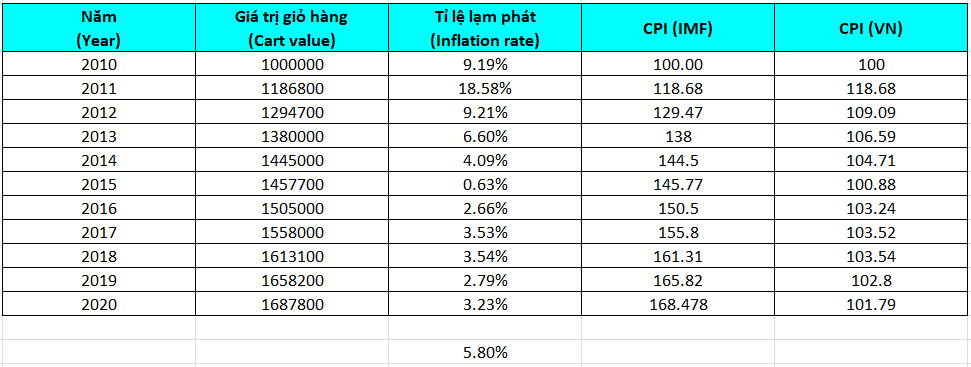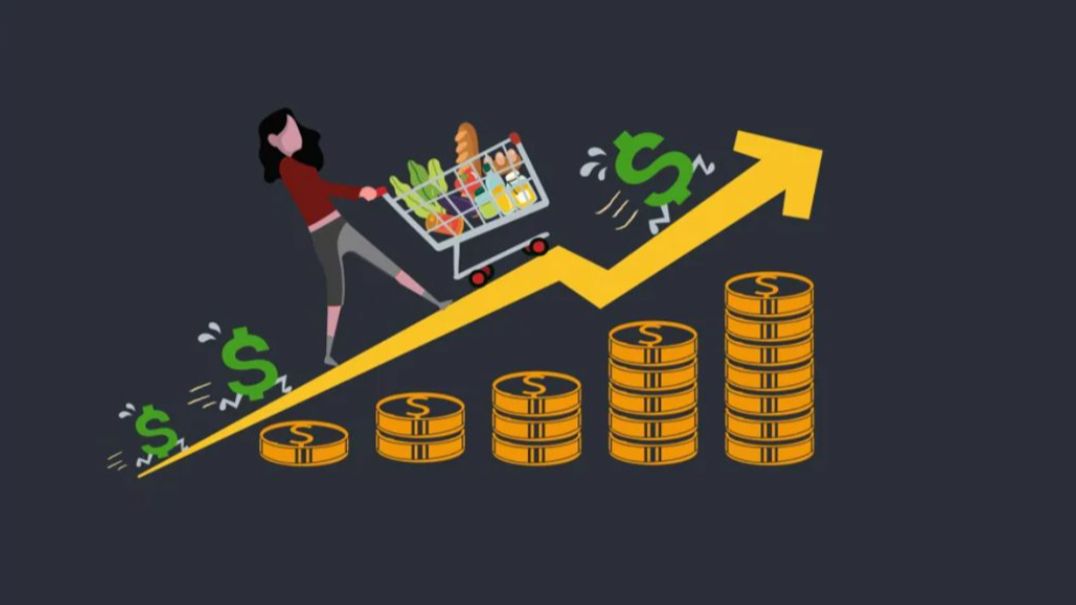There is an investor whom I greatly admire and respect, his name is Ray Dalio, he said a very famous quote: “Cash is trash”, meaning “cash is worthless”, the idea he wants to convey is in this context, accumulating little cash will be the worst way for us to build our finances. Next, suppose you no longer save money, because if you let money sit idle, it will lose value.
So now I will put money into a savings account, the bank pays interest every year, so my money will gradually increase each year, I will not have to worry about it losing value anymore, this may sound reasonable at first, but when we analyze deeply, we will also see that this method is not stable, and that is the content of today's lectures that I want to share with you, which is the inflation rate and we will explore together why it is a silent enemy to all our savings.
What is inflation?

Basically, it is the decrease in the purchasing power of money, for example, the day before you could buy a cup of coffee with a 10,000 dong bill, then after a while you need 5 bills to buy a similar cup of coffee, that is inflation. There are many causes of inflation, but in today's lecture, I will share with you three main causes:
The first cause is called “cost push inflation”, this refers to cases where production costs for businesses increase, and therefore they have to raise the prices of the goods they produce in order to continue operating. So why do production costs increase? It comes from many reasons, for example, the first is the increase in raw material prices, the second reason is the increase in labor costs, or it could be due to higher rental costs for offices and factories than before, all these costs will increase the total production and operating costs of those businesses, from which, whether they want to or not, businesses have no choice but to raise product prices and the end point of these price increases will be that consumers have to pay more for the goods produced by businesses, that is cost push inflation.
The second common cause is called “demand push inflation”, this refers to cases where too many consumers need something, but on the producer side, they cannot produce quickly enough to meet consumer demand, a common reason for this is that people's living standards are gradually increasing, leading to them having more money, and from there they shop more, causing consumer demand to rise, which in turn drives up the prices of goods. This is also the reason why, from a macroeconomic perspective, the government can control inflation rates using some tools such as: first, reducing taxes, or more commonly, increasing or decreasing interest rates, because basically when we reduce these things, people will have the opportunity to access more money, leading to higher shopping demand, if we understand this, we will see that reducing taxes is not always a good thing.
The third reason is also the most common reason that whenever inflation is mentioned, people think of it first, which is when the central bank prints more money, you can understand this simply, for example, currently in the market there are 1,000 bills of 500,000 dong, and we have a fixed amount of goods. Now suppose with that amount of goods in the market unchanged, but the government decides to print an additional 1,000 bills to circulate in the market, then this means that each bill, although the printed number on the bill is still 500,000 dong, but its purchasing power is reduced to half. The reason governments do this is also to increase purchasing power, in simple terms, it is also a tool for the government to adjust and control the economy.
Usually, when inflation is mentioned, people often refer to it with a rather negative perspective, because basically it causes money to lose value gradually. But actually, if we understand it a bit more thoroughly, inflation is not necessarily bad; inflation is only bad when it grows uncontrollably. Inflation does not always mean bad signals; on the contrary, if inflation is controlled, it can be a good thing for the economy.
What is the Consumer Price Index (CPI)?

People rarely mention the inflation rate, instead, they often refer to another index called the “Consumer Price Index”, in English it is called CPI, short for “Consumer Price Index”. Simply put, CPI is one of many indices that reflect inflation rates. I will give you an example for easier understanding, and to prepare for this example, I have taken actual data from the International Monetary Fund (IMF). Here I have a report on the CPI indices of Vietnam from 2010 to 2020, from the numbers in this chart, I have created a calculation table, next I also have data from the General Statistics Office of Vietnam, I will also take this data and put it here, and the immediate thing we see is that these numbers differ quite a lot.
The CPI indices from the IMF are much higher than those from the General Statistics Office, so why is that? In fact, both reports are not wrong; it’s just that in the reports from Vietnam, they use a different calculation method, and now I will help you understand everything. We will have an example like this: suppose in 2010, you went to the market once a week, and each time you went to the market, you bought a basket of various items, with a total value of 1 million dong. And if we base on the IMF data, then in 2011, to buy the same basket of goods, instead of 1 million, you now have to pay 1,186,000 dong to buy a similar basket, meaning in this case, prices have increased by about 18% after one year, and this is the inflation rate of Vietnam in 2011.
Unlike inflation, CPI is not calculated as a percentage, but based on a number. We need to further understand another concept called “base year”, the base year is the year we consider the number to be 100, and in this case, the base year is 2010. When we look at 2011, we will have an inflation rate of 18% compared to the base year, so we have a CPI of 118. Up to this point, basically, we see that the inflation rate and CPI indices seem to be similar, but no, now looking at 2012, with the same basket of goods we have been talking about, the price we have to pay is 1,294,000 dong to buy a similar basket, at that time the CPI will be 129, from there you can try to calculate what the inflation rate for 2012 is?

So the inflation rate for 2012 is 9%, while the CPI calculated by the IMF is based on the base year of 2010, so it will be 129.
We start to look at the column of the General Statistics Office of Vietnam, why is there a discrepancy compared to the IMF numbers? The reason is that instead of using a fixed base year of 2010, in this case, we are calculating statistics for the periods from 2010 to 2020, the General Statistics Office resets the base year each year. In other words, instead of comparing to 2010, they take the value of previous years, meaning they are calculating CPI equivalent to the way inflation is calculated, that is why we see in the CPI report of Vietnam lower than the reports from the IMF, even though both reports are for the same period. Here, I am not saying who is right or wrong, it’s just that we, as viewers of these reports, need to have enough knowledge to understand what we are hearing or seeing in the media, and that is the CPI consumer indices over the past 10 years, one column is from the IMF and one column is from the General Statistics Office. And here is the inflation rate of Vietnam over the past 10 years, from these numbers, we can calculate the average inflation rate over the past 10 years is about 5.8%.
I can simply say that according to statistics, the inflation rate of Vietnam over the past 10 years is 5.8%, and the reason I share with you a series of content about CPI and inflation is to take this opportunity to help you understand more about the aspects of such important topics. My goal in these courses is not just to talk about stock investment, but I want to give you as much knowledge as possible, hoping that these shares have somehow helped you understand more about inflation, as well as related concepts of inflation, hoping that these shares have somehow helped you understand more about inflation, as well as related concepts of inflation.
